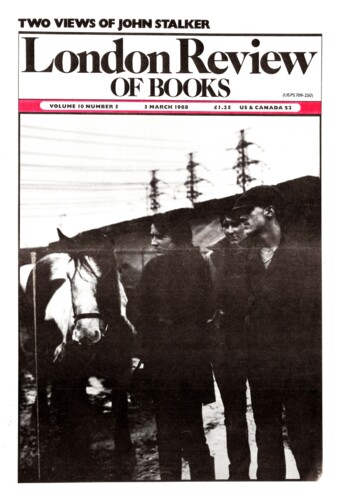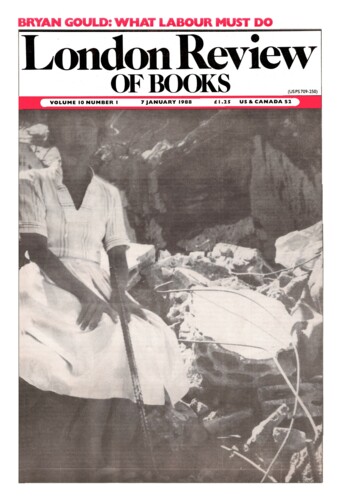Accidents
Paul Foot, 4 August 1988
When something awful or unexpected happens in public affairs, we are usually referred to the ‘cock-up theory of history’. This is preferred by realists to the ‘conspiracy theory of history’. That strange or shocking events should be ascribed to mistakes, accidents or coincidences is very much more comforting than the notion that they are part of some sinister plot. Take the example, familiar to readers of this paper, of Hilda Murrell. In 1984, Miss Murrell, a 72-year-old rose specialist who lived in Shrewsbury, was taken out of her house in her own car, driven to a field outside the town and systematically, apparently ritualistically, stabbed. She was left unconscious in the field, where she died of exposure. The Shrewsbury Police announced that the murder was the result of a burglary gone wrong. Their suspect, they were convinced, was a ‘common burglar’. He had, we were told, been surprised by Miss Murrell returning to her home, and had panicked. This was perhaps the first common burglar in the history of petty crime who ‘panicked’ in such a way that he took his victim out of the house, where he and she were relatively unobserved, and in broad daylight drove her through crowded streets to a place where he carried out a ritual murder. There were those at the time who challenged the police assumptions. There were even some conspiracists who observed that Hilda Murrell had been an objector to the proposed new nuclear power-station at Sizewell; that the surveillance of all such objectors had been put out to contract by a high-powered London security firm; and that the contract had been won by an Essex private detective, Victor Norris, whose main credentials were that he was a Satanist, a fascist, and had been sent not long previously to prison for six years for hiring out his own small daughters for the sexual gratification of his associates. Norris wasn’t Hilda Murrell’s murderer – who, everyone agrees, was a man half his age – but the choice of someone like him to carry out this kind of surveillance is an interesting indication of the characteristics required of a nuclear spy.’





